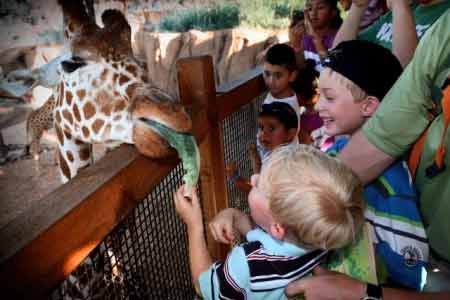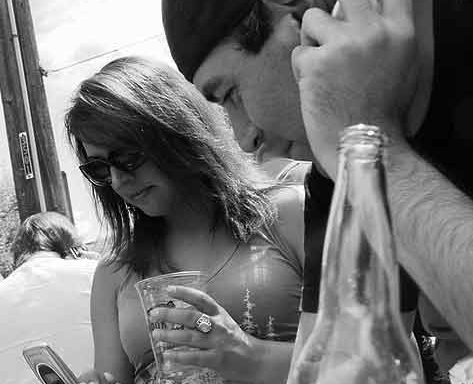Duncan Shropshire stops by the edge next to the tree line, exactly where the meadow will become a forest. His yellow linen shirt is mis-buttoned and crooked, leaving the bottom of his stomach somewhat uncovered.
His 8-year-old daughter, Mia-Grace, stands a foot or so behind him, wiping her runny nose together with the sleeve of her blue sweatshirt. Right after about a moment, she lets out a sigh of boredom.
Shropshire, 51, clasps his daughter’s hand and starts talking…stop her in to the Northwest Georgia forest.
“This is exactly where your ancestors are buried, again right here,” Shropshire says. “C’mon, I am going to show you.”
And having a loving tug, Duncan Shropshire shares along with his daughter a crucial bit of their family’s background.
Nonetheless keeping fingers, the pair weaves by means of the maze of skinny pines, stepping more than fallen oaks and basketball-sized sinkholes. Mia-Grace stays silent though her father appears singularly targeted on transferring ahead. Immediately after 5 minutes, they visit a mass clearing exactly where rows of fist-sized rocks bulge out from the floor.
Each and every rock sits atop modest depressions inside the floor.
“You see these humps inside the floor?” Shropshire asks.
“Uh-huh,” Mia-Grace replies.
“Those are rows of graves. They are stacked like spoons right here,” Shropshire says. “There was a good deal of people today right here. People today with the 1800s are buried right here. And I am attempting to maintain it inside your memory the way in which granddaddy held it in mine so it will not be forgotten.”
The 2 crouch down getting closing to the ground, flat rock with all the phrases “Lewis Dickson, 4? scratched into it. For the left with the marker is often a row of twelve rocks. Towards the entrance, you’ll find 4 other rows of stones, various in range.
“How long did they bury our kin right here?” Mia-Grace asks.
“They began within the early 1800s, child,” Shropshire solutions. “They labored our individuals to die right here. They had been slaves. And most likely by about 1905 is the time they stopped burying in this particular region. Your great-great-great grandfather, a (slave-owning) gentleman named Wesley, he had 5 youngsters by this slave lady, your great-great-great grandmother. She is buried more than right here on this facet. Her title is Molly.”
Mia-Grace’s mild green eyes get massive. “I’m anxious may I possibly plan on them,” she says.
“Oh, child,” Shropshire says having a chuckle, “they’re gone. They are gone! They are sleeping now, awaiting the Lord to arrive.”
A “rare” and “special” location this is.
The Shropshire gravesite is inside the Appalachian foothills exterior Gore, Georgia. About 1,000 ft from your clearing. It is definitely an outdated abandoned church on the dusty dirt street. Specialists say that if slaves or previous slaves are buried in the are it could be a exceptional archeological find.
“In Appalachia, it could be incredibly uncommon to possess a black or slave graveyard,” explained Ruth Small, co-author of “Sticks and Stones: 3 Centuries of North Carolina Grave markers.” “The farms in Appalachia had been modest, and there had been less slaves.”
Small says slave cemeteries within the region would already be marked with area stones, such as the rocks in the site, or wood stakes that burned down.
“It’s incredibly regional and extremely nearby,” Small continued. “I’ve observed within the coastal location with graves marked with seashells.”
Other grave markers utilized in black burial cites all through the Southeast incorporate iron pipes, damaged dishes, cups, bottles and reside cedar trees, based on Chicora Basis Executive Director Michael Trinkley. He focuses on cemetery preservation.
“The difficulty with preserving these kinds of sites is the fact that African-American cemeteries are challenging to uncover,” Trinkley mentioned. “You can believe the folks buried there because of the invisible dead. Instead of understanding exactly where they’re, or how a lot of you can find, helps make them prone to be hard to find.”
Even when gravesites are acknowledged, they nevertheless could be destroyed for improvement. Trinkley factors towards the very low nation of South Carolina.
“The regions that had been employed for burial grounds,” Trinkley explained, “those locations had been near to h2o. They had been regarded as waste locations, locations exactly where burying slaves was not a considerable reduction for the planter. These places currently are amongst probably the most sought-after for actual estate.”
Officials in Chattooga County, exactly where the web page is situated, say that they’re unaware of any grave websites within the hills close to Gore and the web-site requirements to become registered with all the library being a cemetery prior to it could be regarded as for safety via nearby ordinances.
Trinkley and Small each say the possible historical significance of grave websites warrant investigation by nearby or state officials.
“What if in that grave was your mom or your youngster?” Trinkley asked. “It’s an concern of respect and an concern of dignity. It is the final choice culture as well as the person make with each other.”
“There are not numerous traceable slave graveyards, and every single 1 is unique in it is personal way,” Small additional. She says the Shropshire family members can position to that spot and say, “This is exactly where we’re from; this can be exactly where our roots are.”
Two cemeteries for two ancestors
Shortly prior to sunset, Mia-Grace and Duncan Shropshire head more than to an previous white cemetery about a mile in the forest gravesite. The dates about the gravestones recommend that it absolutely was utilized across the very same time because the forest cemetery.
There, Shropshire and Mia-Grace stroll more than to some marble headstone that tops ten ft. Before it really is a modest plastic Confederate flag flapping inside the breeze.
“This is Wesley Weatherspoon Shropshire. … He was 1 from the colonels within the Civil War for your Confederacy,” Shropshire says. “He had 5 young children by means of a slave he owned through the identify of Molly.”
“My great-great grandmother?” Mia-Grace asks.
“Your great-great-great grandmother,” Shropshire corrects her. He turns to level towards yet another grave site when Mia-Grace notices her father’s misbuttoned shirt. She stops him mid-sentence and starts to repair the crooked buttons.
“Why is Molly buried more than there and Wesley more than right here?” she asks.
“Because that is the way in which it absolutely was, Mia,” Shropshire solutions.
Mia-Grace’s confront is filled up with intensive focus as she tries to undo the bottom button on her father’s shirt.
Lastly, she pries the button absolutely free. She seems up at her father and says assuredly, “But people today are individuals. It does not issue what they’re. They are all of the very same.”
“That’s a great factor to believe, but back again then it was not like that, Mia,” Shropshire tells her. “The dark-skinned men and women had been buried way back again more than yonder, as well as the light-skinned folks had been buried right here.”
Mia-Grace lastly fixes her father’s shirt, leaving it straight. Then, she skips more than towards the other finish with the cemetery. Shropshire watches her race throughout the whole lot.
“You cannot do effectively in existence in the event you do not know your background. Without having your background, you are absolutely nothing,” he says.
Mia-Grace playfully hides behind a massive headstone, calling for her daddy to chase her. A quarter-way towards her, he stops, turns about and yells back again, “I reckon she’ll be buried wherever she desires to.”





